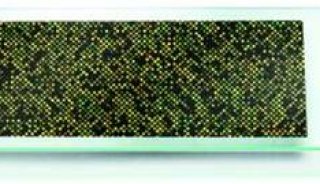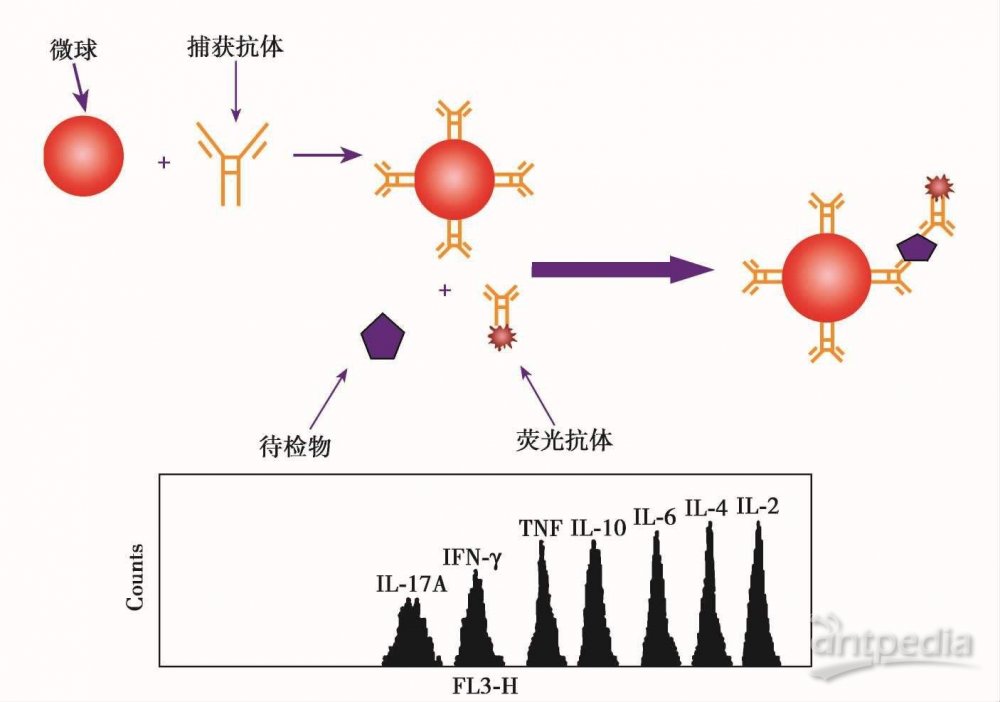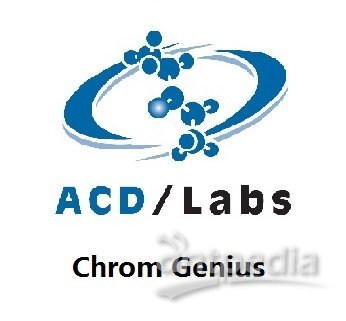人工转录因子的部件——人类锌指结构-1
Human zinc fingers as building blocks in the construction of artificial transcription factors
Kwang-Hee Bae1, 4, Young Do Kwon1, 2, 4, Hyun-Chul Shin1, Moon-Sun Hwang1, Eun-Hyun Ryu1, Kyung-Soon Park1, Hyo-Young Yang1, Dong-ki Lee1, Yangsoon Lee1, Jinwoo Park1, Heung Sun Kwon1, Hyun-Won Kim3, Byung-Il Yeh3, Hyean-Woo Lee3, Soon Hyung Sohn3, Joonho Yoon3, Wongi Seol1 & Jin-Soo Kim1, 1
1. ToolGen Inc., 461-6 Jeonmin-Dong, Yusung-Gu, Daejeon, 305-390, South Korea.
2. School of Biological Sciences, Seoul National University, Seoul, 151-742, South Korea.
3. Department of Biochemistry and Institute of Basic Medical Sciences and IFBB, Yonsei University, Wonju College of Medicine, Wonju, 220-701, South Korea.
4. These authors contributed equally to this work.
Correspondence should be addressed to J -S Kim. e-mail: jsk@toolgen.com
We describe methods for generating artificial transcription factors capable of up- or downregulating the expression of genes whose promoter regions contain the target DNA sequences. To accomplish this, we screened zinc fingers derived from sequences in the human genome and isolated 56 zinc fingers with diverse DNA-binding specificities. We used these zinc fingers as modular building blocks in the construction of novel, sequence-specific DNA-binding proteins. Fusion of these zinc-finger proteins with either a transcriptional activation or repression domain yielded potent transcriptional activators or repressors, respectively. These results show that the human genome encodes zinc fingers with diverse DNA-binding specificities and that these domains can be used to design sequence-specific DNA-binding proteins and artificial transcription factors.
Genes are regulated at the transcriptional level by transcription factors that interact with specific DNA regulatory elements to activate or inhibit transcription initiation. Many transcriptional factors have modular structures that consist of a DNA-binding domain and an effector (activation or repression) domain. The effector domains of many transcription factors remain active when transferred to heterologous DNA-binding domains1. This suggests that it may be possible to construct novel transcription factors by preparing DNA-binding domains with the desired DNA-binding specificities and then linking them to the appropriate effector domains.
A wide range of organisms has transcription factors containing zinc-finger motifs, which bind to DNA in a sequence-specific manner. There are several types of zinc fingers, but members of the Cys2-His2 class are ideal for generating artificial transcription factors owing to their diversity and modular structure. For example, novel DNA-binding proteins have been created by using phage display to alter the DNA-binding specificity of a zinc-finger protein (ZFP)2-7. Although phage display is an effective method, it is labor-intensive and time-consuming. Moreover, because phage display uses in vitro selection, the selected ZFPs might not function efficiently in vivo. With phage display, ZFPs are selected by binding to 'naked' DNA rather than to chromatin, whereas in eukaryotic cells DNA is packaged into nucleosomes to form chromatin.
To circumvent these problems, we developed an approach for constructing DNA-binding proteins that recognize the desired DNA sites in eukaryotic cells. We isolated zinc-finger domains with diverse DNA-binding specificities by screening, in yeast, plasmid libraries that encode zinc fingers derived from the human genome. These zinc fingers were then used as modular building blocks to construct novel DNA-binding proteins and, subsequently, designer transcription factors.
Results
Zinc fingers derived from the human genome.
We modified the yeast one-hybrid system8-10 to select zinc fingers that exhibit diverse DNA-binding specificities. This system includes two essential components: a reporter plasmid and a plasmid that encodes a hybrid transcription factor (Fig. 1A). The hybrid transcription factor consists of two domains: a DNA-binding domain and a transcriptional activation domain. We used the Gal4 transcriptional activation domain fused to the Zif268 protein as our hybrid transcription factor. Zif268 is a zinc-finger protein that contains three zinc-finger domains; together, the three-finger protein binds specifically to a 9 base pair (bp) DNA sequence (5'-GCG TGG GCG-3'). Each zinc finger of Zif268 recognizes a 3 bp subsite within the 9 bp compound binding site.
To isolate zinc fingers with diverse DNA-binding specificities, we cloned human DNA segments that encode zinc fingers. The DNA segments were amplified using PCR. The PCR products were then cloned into a yeast expression plasmid that contained the Gal4-Zif268 hybrid transcription factor. In this library, zinc finger 3 (the C-terminal finger) of Zif268 was replaced with zinc-finger sequences amplified from the human genome (Fig. 1A).
We used both yeast HIS3 and Escherichia coli LacZ as reporter genes. The reporter plasmids were constructed by inserting three copies of the target DNA sequences adjacent to the coding regions of the reporter genes. The target sequences have the format 5'-XXX TGG GCG-3', where XXX corresponds to a 3 bp target subsite and TGG GCG corresponds to the DNA sequences recognized by finger 1 (the N-terminal finger) and finger 2 (the middle finger) of Zif268 (Fig. 1A). In total, two sets of 64 different reporter plasmids were prepared (one set for each of the two reporter genes).
We identified zinc fingers with diverse DNA-binding specificities by isolating yeast cells in which transcription of the reporter genes was activated. The amino acid sequence of each selected zinc finger was deduced from the DNA sequence, and each zinc finger was named using the single-abbreviation of the four amino acid residues at positions -1, 2, 3, and 6 in the  -helix of the zinc finger. These amino acid residues are expected to make contact with bases in the target DNA subsite11-15.
-helix of the zinc finger. These amino acid residues are expected to make contact with bases in the target DNA subsite11-15.

Figure 1: In vivo screening system and zinc 'fingerprints'.
(A) Zinc-finger screening system in yeast. Zinc-finger domain 'A' recognizes the 3-bp target DNA subsite (designated XXX) upstream of the reporter gene, and transcription of the HIS3 or LacZ reporter gene is activated. As a result, the yeast grows on a medium lacking histidine and forms a blue colony when grown on a medium containing X-gal (see Fig. 1B). In contrast, zinc-finger domain 'B' does not recognize the target subsite. In this case, the reporter gene is not activated; thus the yeast does not grow on a medium lacking histidine and forms a white colony on a medium containing X-gal (see Fig. 1B). AD, transcriptional activation domain; 1, zinc finger 1 of Zif268; 2, zinc finger 2 of Zif268. (B) Zinc fingerprints. The DNA-binding specificities of selected zinc fingers (QSSR1, VSNV, and RSHR) that had been fused to fingers 1 and 2 of Zif268 were determined in yeast cells using 64 LacZ reporter sets, each of which contained one of the 64 triplet subsites. '+' indicates a positive control, which contains the third finger of Zif268 and a reporter plasmid containing its subsite sequence, GCG. '-' indicates a negative control, which contains only the first and second fingers of Zif268 and a control reporter plasmid with no binding sequence. The sequences of the functional 3 bp subsites for each of the ZFPs are shown in parentheses after the protein name, but can also be deduced from the positions of the blue colonies using the key in the bottom right. 'Fingerprints' for other zinc fingers are shown in Supplementary Figure 4 online.
The DNA-binding specificities of the selected zinc fingers in yeast cells were determined using the 64 LacZ reporter plasmids, each of which contains one of the 64 distinct triplet subsites within the 9 bp target DNA sequences (Fig. 1B). Many of the selected zinc fingers showed a unique DNA-binding signature. For example, cells harboring the plasmid that encodes the QSSR1 zinc finger fused to fingers 1 and 2 of the Zif268 protein and the Gal4 activation domain formed blue colonies only when mated with cells that contained the GTA and GCA reporter plasmids. This means that, under the conditions of the assay, the QSSR1 finger recognizes the GTA and GCA triplets but not the other 62 triplet subsites. After screening  2,000 zinc fingers present in our library, we obtained a total of 56 zinc fingers that showed distinct DNA-binding specificities in our yeast system (Table 1). As a group, these zinc fingers recognize 25 subsites.
2,000 zinc fingers present in our library, we obtained a total of 56 zinc fingers that showed distinct DNA-binding specificities in our yeast system (Table 1). As a group, these zinc fingers recognize 25 subsites.

Table 1: Lists, target subsites, and Kd values of selected human zinc-finger domainsa
For selected fingers, we compared the amino acid residues at the critical base-contacting positions with those expected from the zinc finger–DNA recognition code described previously11-13. Amino acid residues at positions -1, 3, and 6 in the  -helix of zinc fingers play important roles in base-specific interactions14, 15. Although this code is of limited utility in designing new site-specific DNA-binding proteins16, 17, we found it quite useful for analyzing the selected zinc fingers. Overall, the amino acid residues at the critical base-contacting positions of the selected zinc fingers matched those predicted by the code in at least two of the three critical positions.
-helix of zinc fingers play important roles in base-specific interactions14, 15. Although this code is of limited utility in designing new site-specific DNA-binding proteins16, 17, we found it quite useful for analyzing the selected zinc fingers. Overall, the amino acid residues at the critical base-contacting positions of the selected zinc fingers matched those predicted by the code in at least two of the three critical positions.
We also performed electrophoretic mobility shift assays (EMSAs) to characterize binding of the selected zinc fingers to DNA in vitro (Table 1). The recombinant ZFPs expressed in and purified from E. coli contained fingers 1 and 2 of Zif268 and a selected zinc finger at the C terminus. ZFPs that allowed yeast cells to grow on histidine-deficient plates and produced blue colonies in our yeast assays bound tightly to the corresponding probe DNAs in vitro. Most of the dissociation constants were within the sub-nanomolar range. A few ZFPs, such as the HSNK, QFNR, QSHV, and QSNI proteins, bound with lower affinity to their target sequences, with dissociation constants in the nanomolar range. However, these proteins still showed at least a 50-fold preference for specific target DNA sequences when compared with binding to random DNA sequences (data not shown).
Zinc-finger domain shuffling to construct new DNA-binding proteins.
One of the features that make zinc-fingers ideal for protein engineering is their modular relationship with each other. Our next goal was to test whether the human zinc fingers isolated using our in vivo screening could function in a modular fashion to assemble new DNA-binding proteins. We also sought to ascertain how these naturally occurring zinc fingers would fare relative to engineered zinc fingers created by replacing critical base-contacting residues. We constructed three types of three-finger chimeric ZFPs. (i) ZFPs composed exclusively of the human zinc fingers described above. We selected eighteen zinc-finger domains after considering each domain's DNA-binding specificity and affinity (see Supplementary Table 1 online). (ii) ZFPs composed exclusively of engineered zinc fingers. We chose 18 engineered domains (see Supplementary Table 1 online) that had been selected by phage display and thoroughly characterized6, 18-21. (iii) Hybrid ZFPs composed of both the 18 human domains and the 18 engineered domains. (The engineered zinc fingers described in refs. 22 and 23 were not included in our experiments because they were not available at the time. Therefore, the engineered zinc fingers we used may not represent the best of those currently available.)
To generate the expression plasmids for these ZFPs, we prepared DNA that encodes the chimeric three-finger proteins described above by two different methods. In the first method, nucleic acids encoding the 36 selected zinc fingers were mixed, and three-finger constructs were randomly picked for further analysis. (A total of 33 constructs were prepared using this method.) Each construct was sequenced to determine which zinc-finger domains it encoded, and then a target DNA sequence was synthesized for each randomly assorted three-finger protein. In the second method, segments of DNA encoding various zinc-finger domains were assembled to form chimeric three-finger proteins; the three fingers selected were those most likely to bind to target DNA sequences in the promoter regions of known genes. (A total of 120 constructs were prepared using this method.) A computer algorithm was used to match the preferred recognition sites for the individual zinc fingers with naturally occurring target DNA sequences. Zinc fingers that included an aspartate residue at position 2 were analyzed with special consideration because this residue can form a hydrogen bond with a base outside the 3 bp subsite recognized by the zinc fingers14, 15. The computer algorithm accounted for this additional specificity. If a randomly assembled three-finger protein with an aspartate at position 2 violated the rule for interaction with a base outside the 3-bp subsite, we excluded the protein from our analyses.
We assessed the function of these proteins in transient cotransfection assays24-26. In these assays, ZFPs efficiently repressed VP16-activated transcription of a reporter gene when the ZFPs bound to DNA sequences near the transcription start site. We used a similar in vivo repression assay to determine whether the newly constructed three-finger proteins were functional in human cells. The assay used luciferase reporter constructs that had the appropriate target DNA sequences inserted near the transcription start site.
Our results showed that the human (H) zinc fingers were much better building blocks for constructing new DNA-binding proteins than were the engineered (E) domains (Fig. 2 and Supplementary Table 2 online). Out of 96 ZFPs that were composed exclusively of human domains ('3H: 0E'), 28% of the proteins were highly active (that is, they yielded greater than 2.0-fold repression), and 59% showed greater than 1.5-fold repression. In contrast, only 4% (1 out of 25) of the ZFPs composed exclusively of engineered domains ('0H: 3E') showed greater than 1.5-fold repression, and none of these ZFPs showed greater than 2.0-fold repression. Results with the hybrid proteins, which were composed of both human and engineered domains ('2H: 1E' and '1H: 2E'), fell between those with the all-human and all-engineered ZFPs; only 20% ('2H: 1E') and 6% ('1H: 2E') of these hybrid ZFPs showed greater than 2.0-fold repression, and 33% ('2H: 1E') and 12% ('1H: 2E') showed greater than 1.5-fold repression. These results clearly indicate that human zinc fingers selected in vivo are more useful than mutated domains when the domain shuffling method is used to assemble new ZFPs. (We ruled out the possibility that ZFPs composed of human zinc fingers were simply expressed at higher levels in human cells than were those composed of engineered domains by performing western blot analysis with representative ZFPs (see Supplementary Fig. 1 online).)

Figure 2: Analyses of chimeric zinc-finger proteins assembled by domain shuffling.
The 153 ZFPs were constructed as described in the text. The plasmids encoding each of these ZFPs were cotransfected into HEK293 cells with corresponding reporter plasmids. The reporter plasmids carried the firefly luciferase gene under the control of synthetic promoters in which appropriate binding sites are incorporated at positions near the initiator element (see Supplementary Fig. 3 online). Repression levels (fold repression) were obtained by dividing the luciferase activities from the cells transfected with the empty plasmid by those from the cells transfected with plasmids encoding ZFPs. 'Active ZFPs' were defined as those that showed greater than 1.5-fold repression (low stringency) or 2.0-fold repression (high stringency). The chimeric ZFPs are divided into four groups based on their domain composition (H, human; E, engineered): '3H: 0E', ZFPs composed of three human domains and no engineered domain; '2H: 1E', two human domains and one engineered domain; '1H: 2E', one human domain and two engineered domains; and '0H: 3E', no human domain and three engineered domains. For each group, the percentages of ZFPs that exhibited repression activity of more than 2.0- or 1.5-fold are shown. 3F-ZFPs, three-finger ZFPs.
Why are the human domains better building blocks than the engineered domains? Possible answers include the following. (i) The in vivo selection conditions under which we screened the human zinc fingers might have been more stringent than the phage display conditions under which the engineered fingers were selected. In this regard, we note that several of the engineered domains, when tested in our in vivo yeast assay, did not activate the reporter genes (data not shown). (ii) Most of the human zinc fingers contain a serine residue at position 2, and this may account for their enhanced ability to serve as functional modules in multifinger ZFPs. A serine residue at position 2 might be able to interact with any of the four bases positioned adjacent to the 3-bp subsite, because serine can function as a hydrogen-bond donor or acceptor. Unlike most of the human zinc fingers, engineered domains contain diverse amino acid residues at position 2. This may limit their utility as modular building blocks.
Designer transcription factors composed of human zinc fingers.
To determine whether ZFPs composed of human zinc fingers can regulate transcription of an endogenous gene, we assembled ZFPs that bind to elements in the human vascular endothelial growth-factor (VEGF) gene. This gene was chosen because it has been successfully upregulated using engineered ZFPs constructed by site-specific mutagenesis27. The VEGF promoter sequence that corresponded to the region from nucleotides -950 to +450 was scanned to identify sites nine nucleotides long that are potential target sites for recognition by three-finger ZFPs. Five DNA constructs encoding these ZFPs were assembled with the domain shuffling method described above. The proteins were expressed in E. coli, purified, and used in systematic evolution of ligands by exponential enrichment (SELEX) analyses to determine their DNA-binding specificities. All four ZFPs designed to target the VEGF promoter showed the expected DNA-binding specificities (Table 2).





















